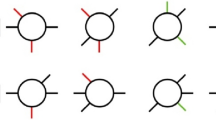Attention processes were studied using a model based on visual searches for a specified element in grids of size 3 × 3 and 7 × 7 cm displayed on a monitor screen. Five age groups took part in the experimental studies: children of five and seven years, a group of 15-year-old adolescents, a group aged 20–35 years, and a group aged over 60 years; a total of 62 subjects took part. Statistical analysis showed that the latter three groups were not different from each other and were used as an adult control group for comparison with results from children. Five types of search were used: one difficult, in which the target was similar to the distractors, and four easy (for adults but not for children), involving seeking a red or a white element in an empty grid and seeking a target markedly different in shape or color from the distractors. The following measures were analyzed: search time, errors (false alarms and misses), and corrected search times allowing for errors. Children performed significantly worse on all measures: they found all types of search difficult, even the search for a single element. The larger number of false alarms (reactions to nonmeaningful signals) was evidence for a deficiency of inhibitory processes in children, these being controlled by the frontal lobes. The larger number of misses in children may be evidence of weakness of selective attention, which is controlled by the parietal and temporal areas of the cortex. These points may indicate that children have an immature attention system, though this would appear to mature completely by age 15 years.
Similar content being viewed by others
References
I. N. Baranov-Krylov and V. T. Shuvaev, “Neurophysiological indicators of voluntary and involuntary visual attention,” Fiziol. Cheloveka, 26, No. 6, 31–40 (2000).
I. N. Baranov-Krylov, V. T. Shuvaev, and I. E. Kanunikov, “Characteristics of activation in the parietal areas of the cortex in humans in different types of visual attention,” Ros. Fiziol. Zh. im. I. M. Sechenova, 92, No. 2, 176–190 (2006).
I. N. Baranov-Krylov and A. P. Astashchenko, “Characteristics of visual seeking and evoked potentials in the extrastriate areas of the cortex in humans,” Ros. Fiziol. Zh. im. I. M. Sechenova, 93, No. 9, 1001–1011 (2007).
A. R. Luriya, Basic Neuropsychology, Moscow State University Press, Moscow (1973).
D. E. Broadbent, “Stimulus set and response set: two kinds of selective attention,” in: Attention: Contemporary Theory and Analysis, D. I. Mostofsky (ed.), Appleton-Century-Crofts, New York (1970), pp. 51–60.
M. Cheal and D. R. Lyon, “Attention in visual search: multiple search classes,” Perception Psychophys., 52, No. 2, 113–138 (1992).
J. Colombo, “The development of visual attention in infancy,” Ann. Rev. Psychology, 52, 337–367 (2001).
R. Desimone and L. Ungerleider, “Neural mechanisms of visual processing in monkeys,” in: Handbook of Neuropsychology, F. Boller and J. Grafman (eds.), Elsevier, Amsterdam (1989), Vol. 2, pp. 267–299.
J. Duncan and G. W. Humphreys, “Visual search and similarity,” Psychol. Rev., 96, No. 3, 433–458 (1989).
H. E. Egeth and S. Yantis, “Visual attention: control, representation and time course,” Ann. Rev. Psychol., 48, 269–297 (1997).
D. R. Gitelman, A. C. Nobre, T. B. Parrish, K. S. LaBar, Y. H. Kim, J. R. Meyer, and M. Mesulam, “A large-scale distributed network for covert spatial attention: further anatomical delineation based on stringent behavioural and cognitive controls,” Brain, 122, No. 6, 1093–1106 (1999).
M. A. Goodale, “Vision for perception and vision for action in the primate brain,” Novartis Found. Symp., 218, 21–34, Discussion 34–39 (1998).
D. M. Green and J. A. Sweets, Signal Detection Theory and Psychophysics, Willey, New York (1966).
K. M. Heilman, E. Valenstein, and M. E. Goldberg, “Attention: behavior and neural mechanisms,” in: Handbook of Physiology. Section 1: The Nervous System, V. B. Mountcastle, F. Plum, and S. R. Geiger (eds.), American Physiological Society, Bethesda, MA (1987), Vol. 5, No. 1, pp. 461–481.
W. A. Johnston and V. J. Dark, “Selective attention,” Ann. Rev. Psychology, 37, 43–70 (1986).
B. Julesz, “Toward an axiomatic theory of preattentive vision,” in: Bat Sheva Seminar on Selective Attention in Sensory Processing, Jerusalem (1987), 120–149 (7): 41–45.
M. Mishkin, L. Ungerleider, and K. Macko, “Object vision and spatial vision: two cortical pathways,” Trends Neurosci., 6, 414–417 (1983).
M. I. Posner and Y. Cohen, “Components of visual orienting,” in: Bat Sheva Seminar on Selective Attention in Sensory Processing, Jerusalem (1987), pp. 531–555.
A. Treisman and G. Gelade, “A feature integration theory of attention,” Cogn. Psychol., 12, 97–136 (1980).
C. Umilta, “Orienting of attention,” in: Handbook of Neuropsychology (F. Boller and J. Grafman, eds.), Elsevier (1988), Vol. 1, pp. 175–193.
T. R. Vidyasagar, “A neuronal model of attentional spotlight: parietal, guiding the temporal,” Brain Res. Rev., 30, No. 1, 66–76 (1999).
O. Vogt (1927), cited in A. R. Luriya, 1973.
J. M. Wolf and T. S. Horovitz, “Perspective: What attributes guide the development of visual attention,” Neurosci., 5, 495–501 (2004).
Author information
Authors and Affiliations
Corresponding author
Additional information
Translated from Rossiiskii Fiziologicheskii Zhurnal imeni I. M. Sechenova, Vol. 94, No. 6, pp. 617–626, June, 2008.
Rights and permissions
About this article
Cite this article
Baranov-Krylov, I.N., Kuznetsova, T.G. & Ratnikova, V.K. Attention Parameters in Visual Search Tasks in Different Age Groups. Neurosci Behav Physi 39, 481–487 (2009). https://doi.org/10.1007/s11055-009-9153-3
Received:
Revised:
Published:
Issue Date:
DOI: https://doi.org/10.1007/s11055-009-9153-3




